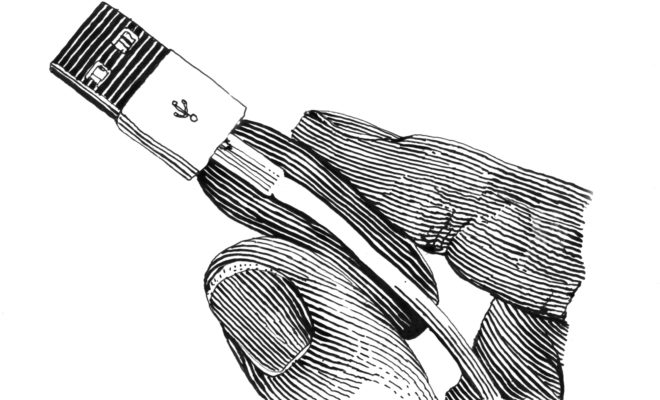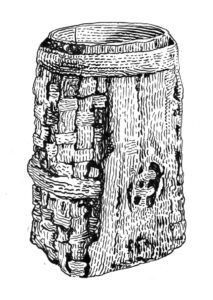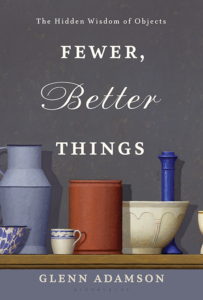 ILLUSTRATIONS BY POLLY BECKER, ALL IMAGES COURTESY OF BLOOMSBURY PUBLISHING
ILLUSTRATIONS BY POLLY BECKER, ALL IMAGES COURTESY OF BLOOMSBURY PUBLISHING
Design
An Object Lesson from Glenn Adamson
MANY READERS OF MODERN MAGAZINE POSSESS a high level of “material intelligence,” even if we have never heard the term before. An appreciation of design history, an interest in provenance, a feeling for materials, and a regard for the designers and craftspeople who make the objects we cherish are some aspects of this important concept, the understanding of which has profound social, cultural, and ecological implications. Thankfully, we have the genial and elegant writing of Glenn Adamson, a curator, scholar, and MODERN contributor, to further deepen our understanding.
 In his new book, Fewer, Better Things: The Hidden Wisdom of Objects, Adamson defines material intelligence as “a deep understanding of the material world around us, an ability to read that material environment, and the know-how required to give it new form.” Adamson sees a worrying diminishment of material intelligence due to digital technology, the advancement and remoteness of manufacturing, a culture of disposability, and an erosion of knowledge of craft. Combining elements of memoir, reportage, material history, and curatorial studies, Fewer, Better Things is an erudite but accessible global survey of the contemporary material landscape and how we can be better informed to shape it.
In his new book, Fewer, Better Things: The Hidden Wisdom of Objects, Adamson defines material intelligence as “a deep understanding of the material world around us, an ability to read that material environment, and the know-how required to give it new form.” Adamson sees a worrying diminishment of material intelligence due to digital technology, the advancement and remoteness of manufacturing, a culture of disposability, and an erosion of knowledge of craft. Combining elements of memoir, reportage, material history, and curatorial studies, Fewer, Better Things is an erudite but accessible global survey of the contemporary material landscape and how we can be better informed to shape it.
 The book begins with Adamson’s reflections on the life of his grandfather, a farmer in rural Kansas: “Homesteaders like them would have been intimately familiar not only with raw meat and mason jars, but with many different types of timber, stone, clay, straw, metals, and innumerable other materials, and many different processes for working with them.” This almost innate knowledge helped create social cohesion through shared experiences and connections to the land and the local community. Adamson is not arguing for a return to an idyllic past, but he is pointing to the value of this knowledge that was too long discounted in the rush toward modernization, urbanization, and class ascendance.
The book begins with Adamson’s reflections on the life of his grandfather, a farmer in rural Kansas: “Homesteaders like them would have been intimately familiar not only with raw meat and mason jars, but with many different types of timber, stone, clay, straw, metals, and innumerable other materials, and many different processes for working with them.” This almost innate knowledge helped create social cohesion through shared experiences and connections to the land and the local community. Adamson is not arguing for a return to an idyllic past, but he is pointing to the value of this knowledge that was too long discounted in the rush toward modernization, urbanization, and class ascendance.
Adamson is equally interested in the future. In one chapter he explores the effects of our digital lives on our experience of places and events, for example, people waiting around at Yellowstone for Old Faithful to blow, solely to capture it for Instagram (with the same shot thousands of other users have previously taken). In another chapter, he delves into tribology, the science of how materials interact with one another through wear. Tribology (who knew?) is essential for creating products that are safe, lasting, and high performing.
 For all the science and cutting-edge thinking in the book, Fewer, Better Things is most moving when it describes objects and rituals of beauty. One of the loveliest chapters examines the history, cultural meaning, and experience of a traditional Japanese tea ceremony. Another centers on Adamson’s memory of a college art history course where students touched Tang dynasty (ad 618–907) ceramics as a way to understand the influx of global influences on China in the period. The course unlocked, for him, a new, more immediate understanding of art history, and it helped inspire his career as a curator.
For all the science and cutting-edge thinking in the book, Fewer, Better Things is most moving when it describes objects and rituals of beauty. One of the loveliest chapters examines the history, cultural meaning, and experience of a traditional Japanese tea ceremony. Another centers on Adamson’s memory of a college art history course where students touched Tang dynasty (ad 618–907) ceramics as a way to understand the influx of global influences on China in the period. The course unlocked, for him, a new, more immediate understanding of art history, and it helped inspire his career as a curator.
For the design inclined, Fewer, Better Things will sharpen the way you think about the world around you. Given the interconnected challenges we face—particularly in how the built environment is harming the natural—it is to be hoped that this book finds a wide audience.

Fewer, Better Things: The Hidden Wisdom of Objects by Glenn Adamson (Bloomsbury, $27)










